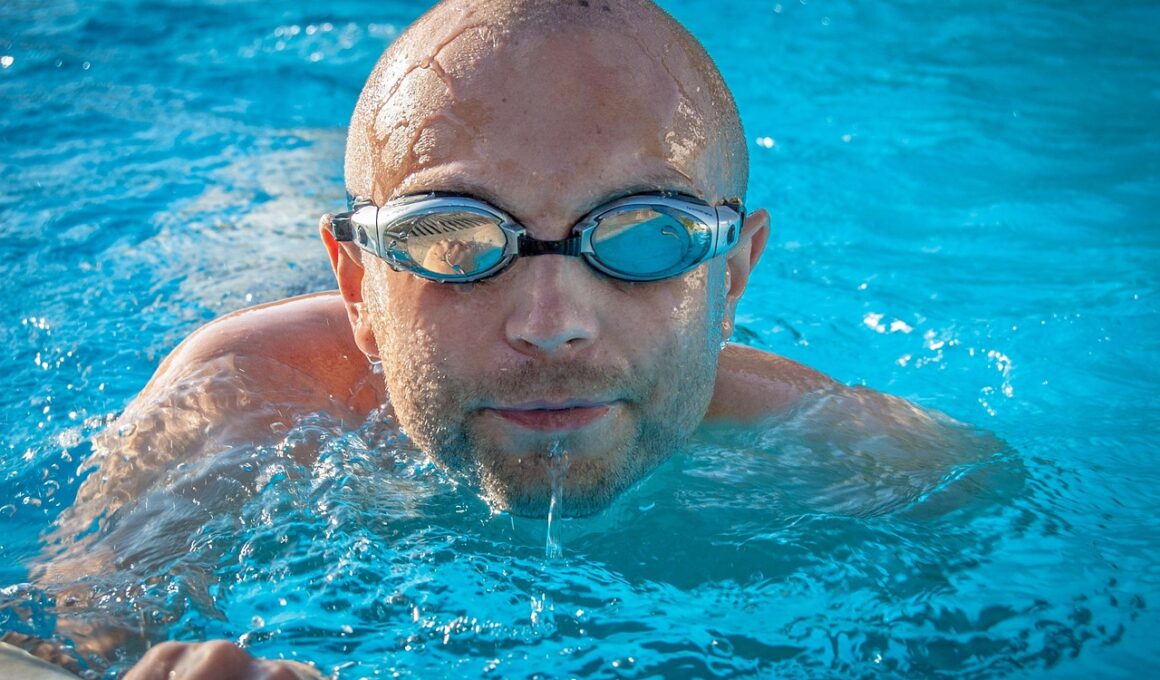Mastering Focus and Sharpness in Swimming Photography
Photographing swimmers requires keen attention to focus and sharpness to capture the perfect moment. When shooting, it is crucial to use a high shutter speed to freeze the action. Swimmers often move quickly, and without the right equipment, images can turn blurry. Aim for at least 1/1000th of a second to ensure that each splash and stroke is crisp. Using sports mode on your camera can also help track fast subjects. Autofocus systems can be beneficial, but manual focus can provide greater control especially in challenging lighting or crowded locations. It’s ideal to pre-set your focus on a specific lane where the action is anticipated. Experimentation is key, and it might take several shots before perfection is achieved. Evaluate your results, and don’t hesitate to make adjustments to your settings. Investing in high-quality lenses can further enhance your results, allowing for great low-light performance as well. Keep practicing and pay attention to light as it affects the imagery significantly, creating dreamy pictures bursting with vibrancy. Explore different angles as well to add depth and interest to your compositions.
In the world of swimming photography, establishing your shooting conditions is essential. Pay attention to the lighting conditions at the pool, whether indoors or outdoors. Pools often have harsh lighting, creating shadows that can hinder a good shot. If indoor, look for additional light sources or use artificial lighting equipment to brighten the scene. Alternatively, outdoor settings offer varying natural light that may change. Shoot during the golden hour, just before sunset, to capture beautiful reflections and vibrant water colors. The angle at which you position yourself also matters. Experiment by getting low to the waterline; this technique can create engaging compositions. An overhead view can also provide a unique perspective. Remember to understand the rules of the swimming competition as well, to avoid missing out on crucial moments. Anticipate finishes and turns; timing is everything in sports photography. Alertness and anticipation can make the difference between a mediocre photo and an award-winning shot. Moreover, communicate with the swimmers or their coaches to understand their strategies better, making it easier to predict movements and capture significant moments effectively.
Camera Settings for Optimal Results
Choosing the right camera settings plays a pivotal role in swimming photography. Begin with adjusting your camera to shoot in RAW format. This format preserves the image data and quality for better editing flexibility later on. Ensure your ISO is set appropriately; higher ISO might be necessary in dim conditions but be wary of added noise. A good rule of thumb is to balance your aperture and shutter speed. For focused results, keep your aperture wide open, like f/2.8, which allows more light to enter, enhancing focus readiness. When shooting, it helps to use continuous shooting mode. This will enable you to take multiple rapid-fire shots in sequence during critical moments like dives or turns. Additionally, switch to autofocus tracking which helps keep active subjects sharp, making it easier to focus as swimmers move swiftly. Remember that technological advancements in cameras can offer improved autofocus capabilities. Regularly practice these settings to become adept at adjusting them swiftly in varying conditions, ensuring readiness for any circumstance that you may encounter while shooting swimmers.
Post-processing is just as crucial as capturing the image itself. After shooting a session, sift through your images to select the best candidates for editing. Software such as Adobe Lightroom or Photoshop can enhance colors, remove distractions, or sharpen details significantly. Pay attention to the color balance; swimming pools reflect greens and blues that can mislead exposure settings. Adjusting tones or contrasts can breathe life into your photos. While editing, aim to strike a balance between realism and eye-catching visuals. Avoid over-processing, which may lead to unnatural results; the authentic feeling should always prevail. One great trick is to enhance clarity or sharpness selectively, emphasizing powerful movements. Sharpening a swimmer’s form while maintaining the surrounding softness can create a dynamic focal point. Explore different filter options, but ensure they complement the image rather than overwhelm it. Save your edited images in high resolution to maintain quality for prints or online sharing. Consider showcasing your portfolio on social media platforms such as Instagram, where you can connect with like-minded photographers. This can also attract swimming teams looking for a photographer.
Understanding Composition Techniques
In swimming photography, composition is as vital as technical proficiency. Learn the rule of thirds, which suggests dividing your image into a grid to position points of interest at the intersections. This can enhance visual appeal and draw viewers into the scene. Experiment with various focal lengths to gather options; telephoto lenses allow you to capture swimmers from afar, highlighting their elegance. Conversely, a wide-angle lens can include more of the environment, presenting the atmosphere of competition. Be mindful of negative space—this refers to areas without subjects, which can create a sense of balance in your image. Framing helps isolate your subject and guides the viewer’s eye. Utilizing obstacles like diving boards or lane markers can create natural frames around swimmers. Focus on the emotions of the event; capturing passionate expressions or competitive intensity can resonate well. Timing the shot to catch height during dives or peak strokes can convey motion effectively. Tell a story through your work, portraying not just the act of swimming but the experience surrounding it. This creativity will add depth and excitement to your photography.
Engaging with your subjects can elevate your swimming photography significantly. Build a rapport with swimmers and coaches as it fosters trust, which may reflect in your images. Consider offering to share photos with your subjects, which can create goodwill and build your reputation. Communicate about the competition formats to better prepare for timed events and turns. Establish which swimmers to keep an eye on, as key athletes often dedicate time to perfect their skills. Learn about their routines or strategies to anticipate exciting moments. Utilize feedback from athletes to refine your shots and understand their perspectives. Additionally, create a comfortable atmosphere by being friendly and approachable during meets. Swimmers are often focused on their performance, and minimizing distraction can yield better photos. Emphasizing support during their performance can also elicit more genuine expressions. Capture candid moments before and after events, providing a broader narrative of competitions. Taking moments off the pool’s edge can result in gratifying images as well. Consider documenting team interactions or training sessions to showcase the dedication involved in swimming sports.
Final Thoughts on Swimming Photography
Mastering swimming photography requires practice, dedication, and testing various settings and techniques to build your skills. Know that improvement comes with time and experience, along with an understanding of equipment. Take the time to study other swimming photographs for inspiration and evaluate what works well. Consider attending swimming events regularly to increase your familiarity with environments and lighting, as intuition develops through exposure to various situations. Continue to seek constructive criticism amongst peers to enhance your photography. Join different photography communities, as sharing experiences can open doors to learning and collaboration. As you capture raw emotions associated with competitive swimming, your enthusiasm can enhance your work. The combination of your technical knowledge, composition, and insights gained can elevate your photography into an art form. Create opportunities by covering local meets or diving competitions, growing your portfolio with diverse experiences. This active engagement can also help you find your unique photographic style among others in the industry. Keep pushing boundaries and experimenting, enabling your photography to reach new heights of excellence.
To sum up, focus and sharpness in swimming photography holds immense importance requiring a blend of equipment, camera settings, and practical knowledge. Reflect upon your journey and recognize areas for improvement while pursuing excellence. Furthermore, your passion for swimming and photography intertwining will encourage you to tell visual stories through your unique lens, transforming ordinary moments into extraordinary memories.


